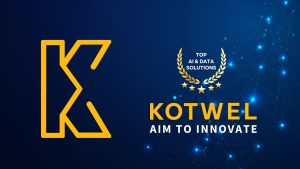Machine learning models are as good as the data they process. Data quality assurance is crucial for developing reliable models that perform well in real-world applications. This post explores essential strategies and methodologies for ensuring high data quality throughout the lifecycle of machine learning models.
Understanding Data Quality
Before delving into the methodologies, it's important to understand what data quality entails. High-quality data should be:
- Accurate: Free from errors and closely representing the true values.
- Complete: Lacking no essential values and having minimal missing data.
- Consistent: Uniform in format and easily integrable with other data sources.
- Timely: Updated and relevant to the current context or problem.
- Relevant: Applicable and useful for the problem at hand.
Data Validation and Cleaning
1. Validation Techniques
Data validation involves ensuring the data meets certain criteria before it is used for model training. This includes:
- Range Checks: Verifying that data values fall within expected bounds.
- Uniqueness Checks: Ensuring no duplicates are present, particularly in key fields.
- Type Checks: Confirming data types match those expected (e.g., dates formatted as dates, numeric fields containing only numbers).
2. Data Cleaning
Cleaning data involves correcting or removing incorrect, corrupted, or incomplete records from the dataset. Strategies include:
- Imputation: Filling missing values based on other data points or statistical methods.
- Error Correction: Using algorithms to identify and correct errors in data.
- Outlier Detection: Identifying and addressing data points that deviate significantly from the norm.
Anomaly Detection
Anomaly detection is critical for identifying data points that are significantly different from the rest of the dataset. Techniques include:
- Statistical Methods: Using z-scores or IQR (Interquartile Range) to find outliers.
- Machine Learning Models: Employing clustering methods like K-means or isolation forests to detect anomalies.
- Deep Learning: Utilizing autoencoders to reconstruct errors that help identify anomalies.
Continuous Monitoring
1. Real-time Data Quality Tracking
Implementing real-time monitoring systems to continuously check data quality as new data comes in. This includes monitoring for:
- New Anomalies
- Shifts in Data Distribution (which could indicate changes in the underlying process)
- Integration Issues when combining new data with existing datasets
2. Feedback Loops
Creating mechanisms to feed learnings from model performance back into the data preparation and monitoring processes. This helps in:
- Adapting to Changes: Quickly adjusting processes when data drifts or when new types of data anomalies are detected.
- Iterative Improvement: Continuously refining data quality checks based on model outcomes and new insights.
Ensuring high data quality is a multi-faceted process that requires robust methodologies and continuous effort. By implementing comprehensive data validation, error detection, anomaly detection, and continuous monitoring strategies, organizations can build machine learning models that are not only trustworthy and reliable but also adaptable to new challenges and data environments. This investment in data quality assurance pays dividends in enhanced model accuracy and reliability, ultimately driving better decision-making and business outcomes.
High-quality AI Training Data Services at Kotwel
Kotwel is a trustworthy data service provider, offering high-quality AI Training Data for Machine Learning and AI. Our clients benefit from our capability to quickly deliver large volumes of AI training data across multiple data types, including image, video, speech, audio, and text.
Visit our website to learn more about our services and how we can support your innovative AI projects.
Kotwel is a reliable data service provider, offering custom AI solutions and high-quality AI training data for companies worldwide. Data services at Kotwel include data collection, data labeling (data annotation) and data validation that help get more out of your algorithms by generating, labeling and validating unique and high-quality training data, specifically tailored to your needs.
Frequently Asked Questions
You might be interested in:
In Computer Vision, image segmentation is a transformative technique that empowers machines to dissect visual data with unparalleled precision. This method plays a pivotal role in enabling machines to distinguish and understand various objects within an image, paving the way for advanced applications across […]
Read MoreThe accuracy and precision of data labeling play a pivotal role in shaping the success of Artificial Intelligence and Machine Learning models. When considering outsourcing AI data labeling, Kotwel emerges as the ideal partner, offering a multitude of compelling reasons to choose us for […]
Read MoreData labeling (commonly known as data annotation) is a critical process in the field of machine learning and artificial intelligence. As the demand for data labeling increases, organizations face the dilemma of choosing between building an in-house team or outsourcing this critical task to […]
Read More




